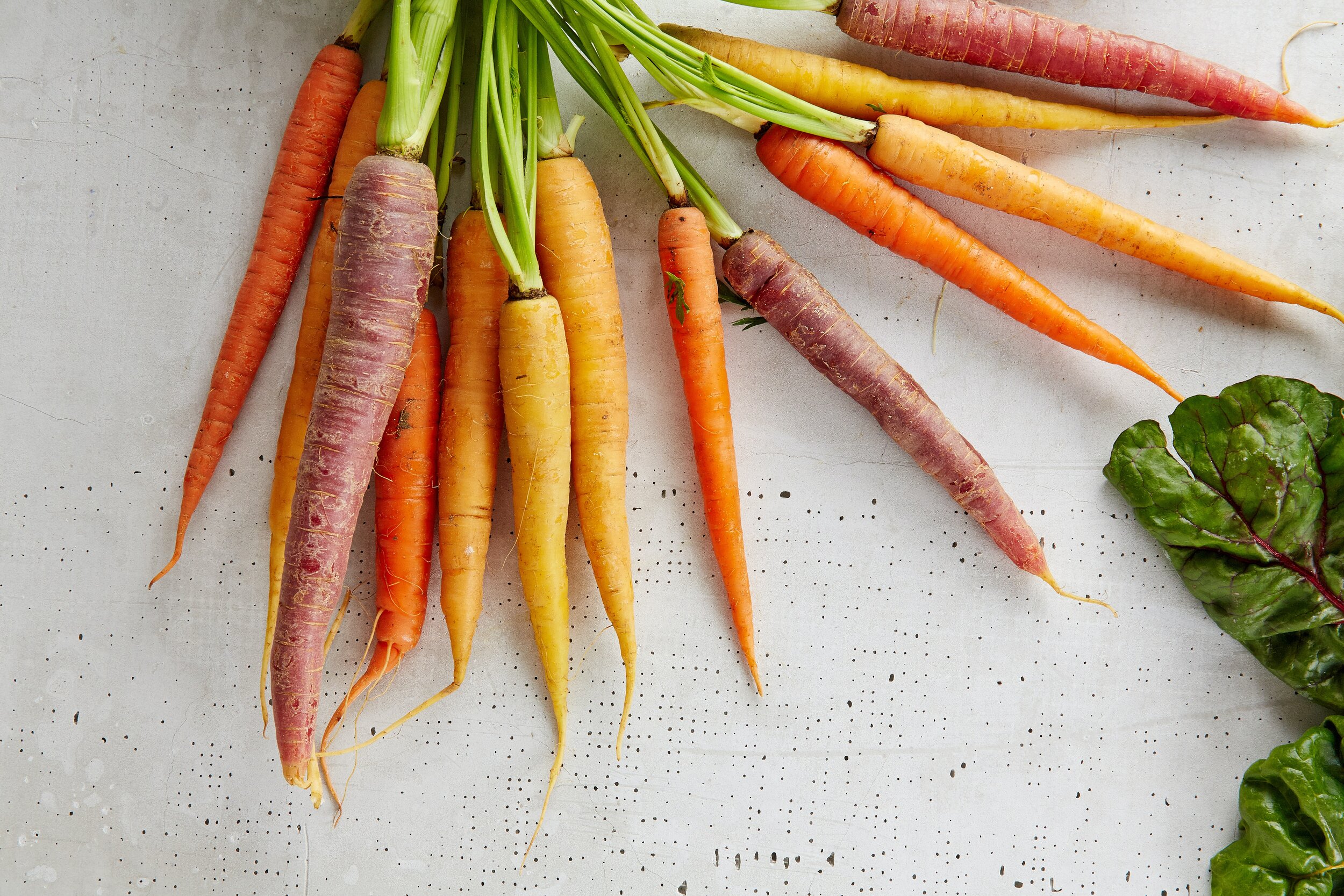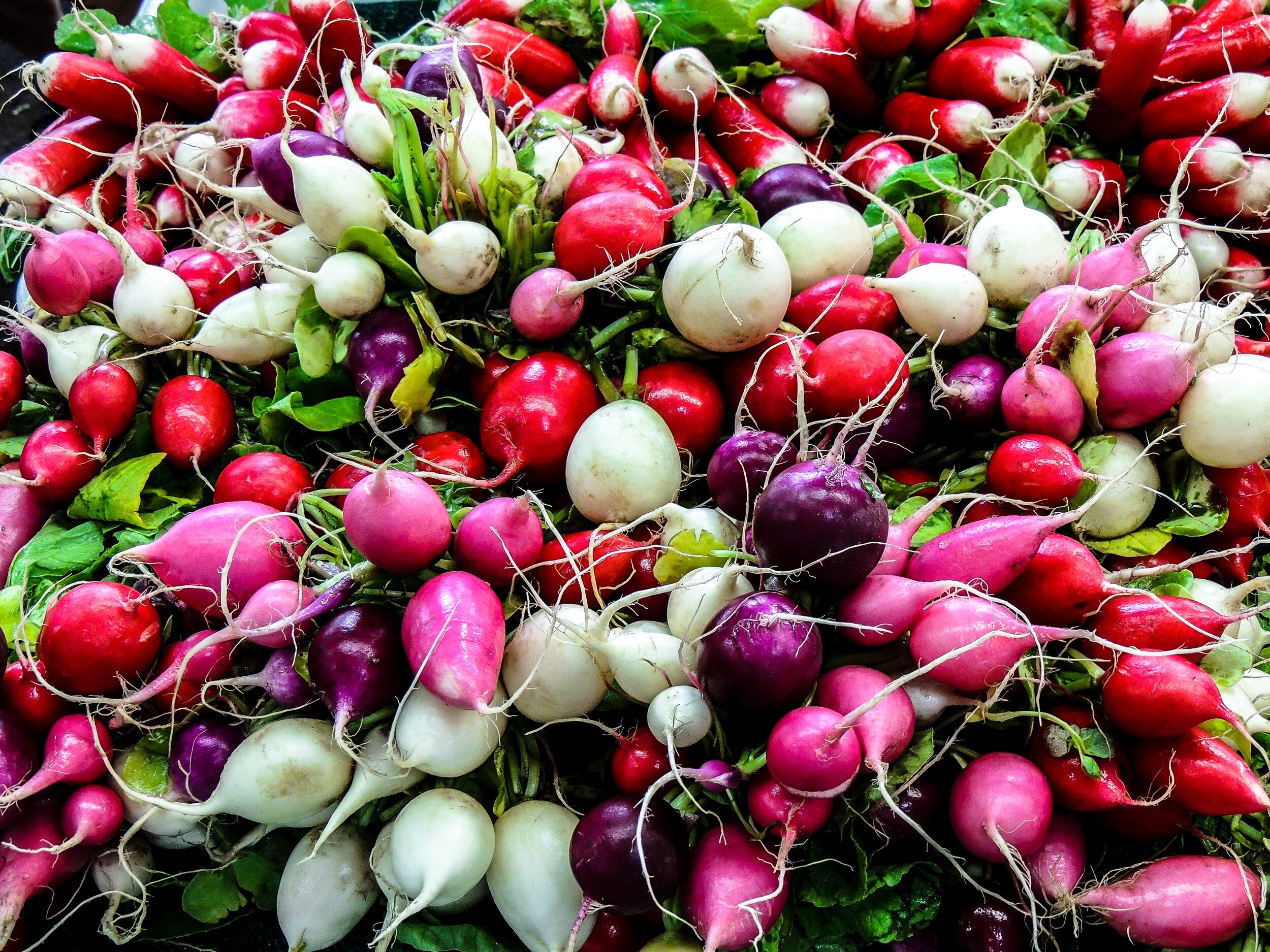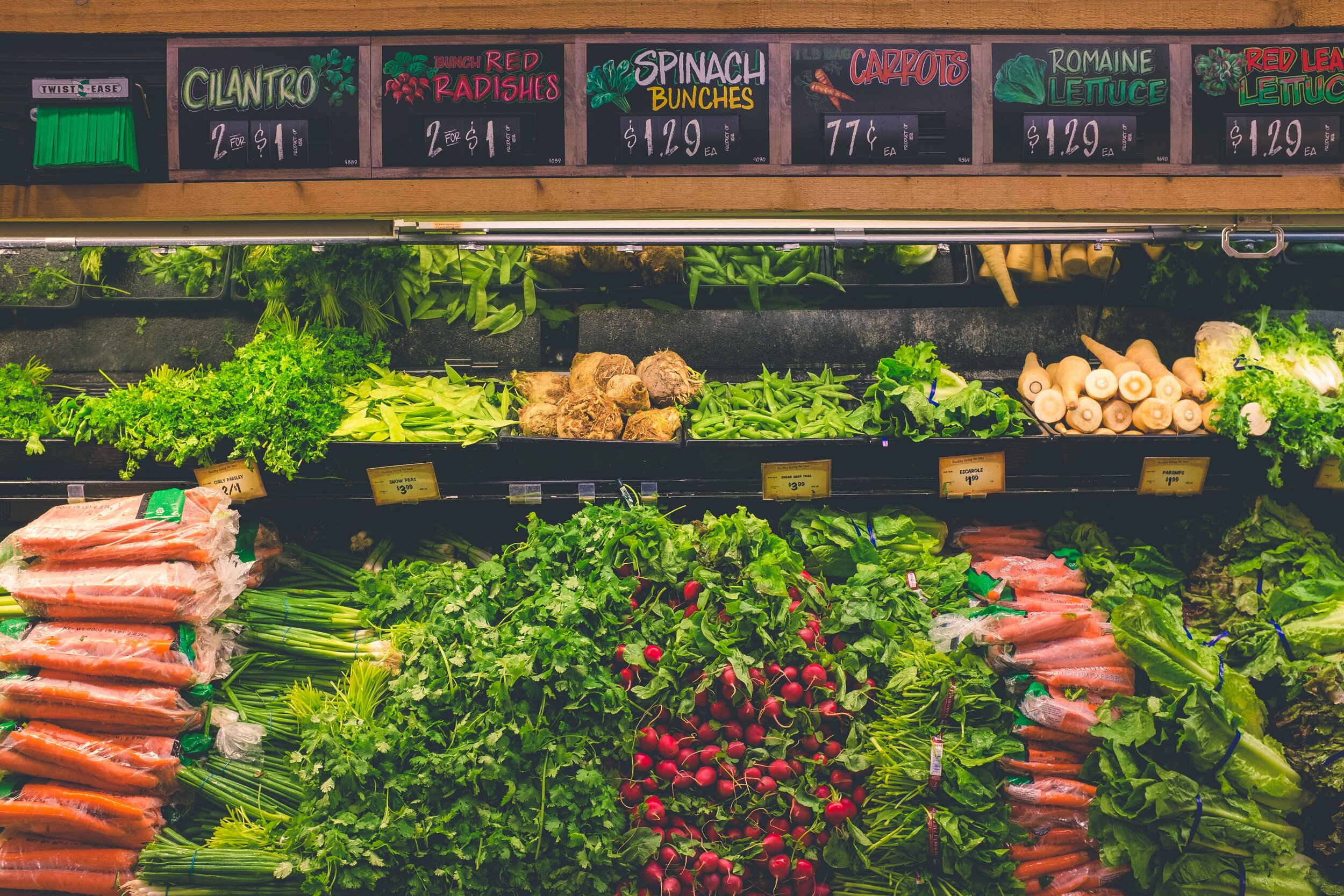Root crops often get overlooked in the plumage of greens and the bliss of fresh tomatoes. Crops such as beets, carrots, radishes, and turnips may not make our top ten list of yummy things to plant.
However, they are wonderful to grow for fresh eating and for storage. Working on becoming self-sufficient? Expand your culinary tastes with some of my favorite root crop recipes at the end of this article.
Growers in USDA Zone 6b often feel challenged by root crops. Clay soil, spring downpours, and summer humidity all seem to challenge these root crops. You can overcome these challenges and grow healthy abundant crops.
Let’s get started!
Varieties
Picking the right variety is crucial. Most of the soil in Zone 6 is clay or rocky so growing those 8-inch-long carrots or big round beets we see in the store is not for us. We need stocky and brave varieties that can push through. We also want flavor – that’s why we garden right?
Here are some of my favorites.
Carrots
Dragon
I love the purple carrots for their sweet taste and crisp texture. Dragon was developed by Johnny’s Seeds. This open-pollinated variety takes 75 days to mature and does well as a fall variety.
Red Cored Chantenay
This open-pollinated French heirloom does well in heavy soil. 70 days to maturity.
Atlas
In the spring I like to plant the short round Parisian style carrots because they mature well before the weather gets hot. They are also great for salads. 70 days.
Beets
Bolder
I used to grow Detroit Gold but they could be a tad temperamental. My go-to yellow beet is Bolder. Great flavor, hardy, and keeps its color when cooked. 55 days to maturity so you can get a spring and fall crop.
Chioggia Guardsmark
The flesh of these beets is pink and red striped. They are very tasty and take 55 days to mature.
Bulls Blood Beets
This variety is grown for its beautiful and tasty leaves which make any winter salad jump out and cheer. The roots tend to get tough and are not as good as other varieties. Bulls Blood takes 60 days to mature and makes a great fall crop.
Radish
Easter Egg
We always grew Easter Egg radishes just because they are fun! A variety of colors with sweet to spicy tastes. Very dependable and ready to eat in 30 days.
Giant of Sicily
Good tolerance of the summer heat, Giant of Sicily, is a large sweet red radish.
Seeds of Change is a quality organic seed company that sells on Amazon.
Turnips
Hakurei
Hakurei is the turnips that made me a convert. A small salad type they are just delicious. Only 38 days to maturity and the tops are also good.
Gilfeather
This culinary legend is actually a cross between a turnip and rutabaga. It is truly an ugly vegetable. But no matter because it has a spectacular taste that is wonderful roasted or mashed. At 85 days they are great for fall and actually taste sweeter after a frost.
Growing Root Crops
I start planting my spring root crops in mid to late March with protection. For a fall crop I plant them mid to late August and use shade cover.
You can read my article My Planting Schedule Zone 6B to learn more.
Root crops need light soil that has been dug down a foot deep. Work in lots of well-rotted manure or finished compost. Full sun to partial shade.
Root crops are predominantly direct-seeded. They do not like to be disturbed once they start growing. I have transplanted beets by growing them in soil blocks so as to cause the least disruption.
A pH between 6.5 – 6.8 is ideal. Add lime if your soil is more acidic.
Raised Beds
I love raised beds for root crops, especially ones I plant in spring. With raised beds you can really tailor the soil, so they don’t have any obstructions. My raised beds are ten inches deep and filled with compost, potting soil, peat, sometimes sand, and some garden soil.
Raised beds also make it easier on my back when I go to thin plants. My raised beds are two feet and three feet wide. I typically use the spacing for square foot gardens.
Check out my YouTube channel where I share 20+ years of gardening experiences in Zone 6 and videos on wildlife conservation.
Traditional in ground plantings
Root crops need soil that is light and devoid of stones. Add lots of well-rotted compost to your root crop section. Never add fresh manure to areas where you are going to plant root crops as they don’t like excess nitrogen.
Pelleted Seed
Many root crop seeds are available in a pelleted format. This is a clay overcoat that makes the seed bigger and rounder. The seeds are easier to handle with your hands and flow through a seeder better.
I personally have not had good luck with pelleted varieties. Germination is the issue. The outside coat needs to dissolve and the seed to germinate in a timely fashion.
My pelleted carrots have had poor germination, so I have chosen to just keep thinning. Since I grow many of my crops using landscaping fabric which reduces the need to thin, I figure I can put that energy into the root crops.
Spacing
Many root crops have very small seeds. Its often recommended that you mix the seeds with coffee grounds or something else, so they don’t get spread as thickly.
Mixing carrot and radish seeds are recommended. The theory is you will pull the quick growing radishes and leave room for the carrots. However, you may still need to thin carrots so they are spaced for ideal growth.
Beets
Place beets three inches apart for smaller varieties and four inches for larger ones. Plant rows twelve inches apart.
Square Foot method plant 16 seeds per square. Thin to one plant per square.
Carrots
Place seeds or thin to two inches apart with rows twelve inches apart.
Square Foot method plant 16 seeds per square. Thin to one plant per square.
Radish
Seeds one inch apart in rows four inches wide for the round ones. For larger root style radishes seeds three inches and rows sixteen inches apart.
Square Foot method plant 16 seeds per square.
Turnip
Full size needs to be thinned to three inches apart in rows twelve inches apart. Square Foot method for salad types plant 16 seeds per square.
Square foot method for full size plant 9 seeds per square.
Thinning
Thinning is often a necessity since it can be hard to properly space such small seeds. Beets are even more problematic because each pod actually contains two to five seeds.
Thin when the plant leaves are 1.5 – 2 inches tall. At my house carrot thinning go to the rabbits and beet and radish go into a salad or on a sandwich.
If you are planting in the ground, you can also use a seeder to help with proper spacing but in my experience, you still have to do some thinning. Also monitor the disks and make sure the seeder is just picking up one seed at a time. I always had difficulties with the carrots.
Nutrients
Knowing what nutrients are best for a particular crop is important. You can read our article Take a soil sample and test your soil for NPK and pH.
Root crops don’t like a lot of Nitrogen – that’s the first number when you look at fertilizer levels. They are all about potash – the middle number.
Don’t add fresh manure to any part of the garden that will have root crops growing in the next six months. If your soil needs nitrogen try alfalfa which has a very slow release.
They will benefit from an application of seaweed fertilizer which contains lots of trace minerals. Beets in particular are sensitive to a deficiency in boron. If your soil is low in boron sprinkle lightly some borax. (don’t overdo it).
Trace minerals can also be added by mixing in greensand. Greensand also helps to make the soil lighter.
This is my favorite supplement for root crops
Weeding
Weeding your root crops is a must. (Sorry). They simply can’t grow with competition. The roots of the weeds will push against the developing plant and cause it to grow mishappen or not at all. We’ve all seen pictures of crooked carrots.
Water
One of the problems of root crops stems from there long germination period. Carrots may take three weeks to germinate. One of the things that can hamper your seeds from germinating in dry or crusty soil.
Keep your seed bed moist at all times. If you are direct seeding into the ground, then consider using a drip irrigation system. Run a dripline along the row of seeds. That way the surface of the soil will stay moist.
For a raised bed you can simply use a watering can with a sprinkle head attached. A gentle spray with a hose may do. You don’t want to have to strong a force that will move the dirt around.
If your roots were tough it was probably due to insignificant water.
Green Manures
Green manures are a great way to prepare soil for root crops. Planning some fall carrots and turnips? Plant buckwheat.
Buckwheat is a great crop for breaking up heavy soil. It’s a warm weather crop that needs two months to grow. Buckwheat grows quickly and suppresses weeds.
In addition, it produces flowers which attract bees and other pollinators in only five to six weeks.
I plant buckwheat in early June in a section of the garden where I plan to grow a fall root crop. After the buckwheat flowers but before it produces seed heads, you will dog it under. Tilling or digging by hand both work well to incorporate it into the soil.
Wait ten to fourteen days and let the buckwheat start to decompose. You are now ready to sow your fall root crops. Remember you will be in the hot days of August so make sure your soil stays moist.
If the days are above 85 degrees, then I often place hoops and shade cloth over the bed. This will also protect the seeds from birds.
Pests
Root crops are very hardy and do not have a lot of pest issues. The biggest pests are wildlife (and maybe your goats) that think they taste delicious. Deer, rabbits, and groundhogs are the biggest foragers of your roots. If you are having a problem, you might consider planting a wildlife garden in a remote part of your property.
Flee Beetles
This is my biggest pest to root crops. The flea beetles chew on the leaves. To protect beet and turnip leaves which are good to eat use row cover in spring and shade cloth in fall.
The flea beetles love the radish leaves as well and since they are not as good for me to eat I often use them as a catch crop. In fact, I have planted radishes near eggplants in order to keep the flea beetles from destroying my egg plants.
I cover my fall seedlings (planted in August) with shade cloth.
Harvesting
With all root crops you just grab the top leaves and give a gentle tug. If you are not sure if they are the right size, simply dig a bit around the plant and check.
Beets
Beets give you two crops on one plant as you can harvest the greens (tops) and the roots. You can cut one or two leaves per plant of the beet greens. These add loads of flavor to a spring salad.
You can start harvesting roots when the beets are the size of a ping pong ball. Young beets are sweet and tender. They are great in salads.
Fuller mature beets are great in soups and baked. If you have a few that have gotten out of hand (yes, firsthand experience) they are still fabulous roasted.
Turnips
The larger winter turnips as well as rutabagas can actually be left in the ground all winter. Give them a thick covering of mulch. Or pull them and store in the root cellar.
Storage
One of the reasons we grow fall root crops is that they store so well giving us food throughout the winter months.
Before storing cut off the tops to within one inch of the root.
Keep root crops in a cool storage area such as a root cellar or basement between 32 – 40 degrees Fahrenheit.
Carrots do well stored in a bucket or tub or moist sand. Beets on the other hand should be layered without touching in dry sand or sawdust.
Cooking Root Crops
Beets
Beets can be messy. You can cut them under running water to help keep them from staining things. If you don’t like having everything get red beet blood, then grow a yellow or white variety.
Beets are great cut up and put in a salad
Shred beets and stir fry in butter
Shred, cook, chill, and then add to cottage cheese with orange sections.
Roasted with other veggies
Beet and apple salad
Salad with beets (cooked and chilled), goat cheese, fennel, and orange slices
Carrots
I think we often think of salads when we think carrots however, they are great in so many ways.
Chilled Carrot Soup from the Cookbook Serving Up The Harvest by Andrea Chesman
Ingredients
2 tablespoons vegetable oil
1 finely chopped yellow onion
1 pound of sliced carrots – about five or six long ones
3 cups of vegetable broth
½ cup of white wine
¼ cup brown rice
2 tablespoons fresh tarragon chopped
Salt and Pepper to taste
Process
Place the oil and onion in a saucepan on medium heat. Sauté until onion is translucent about five minutes.
Add the carrots, two cups of the broth, wine rice and tarragon.
Bring to a boil. When it begins to boil reduce heat to a simmer.
Cover the pan and allow to simmer about 45 minutes. Stir and check a couple of times.
Check that carrots and rice are tender. Remove from heat. Allow to cool
Put the mixture into a food processor or blender. Puree the mixture. Taste and add salt and pepper if needed.
Add the remaining one cup of broth. Mix for 30 seconds.
You can chill for a great summer soup or heat back up in winter.
If you are ready for fancy, check out this fabulous (and reletively easy) carrot cake recipe.
Radishes
Another great snack food. Radishes come in sweet and spicy varieties. Radish can be eaten fresh, cooked and are great when pickled.
Great on a cheese sandwich or a burger
Slice thinly and top on a bagel with cream cheese
Sprouted radish seeds are delicious
Radishes sautéed with garlic and butter
Put them in a chilled soup
Slice thin and add to risotto
Radish Slaw
Shred a bunch (5 or so) of radishes, 2 carrots, and 1 zucchini in a bowl. Add 2 tablespoons of red wine vinegar, 4 tablespoons of olive oil, and ½ teaspoon of dry mustard. Mix in two ounces of crumbled Gorgonzola cheese and stir well. Chill in the fridge for at least three hours. Goes well with grilled meats and plant-based burgers.
Turnips and Rutabagas
The small turnips are wonderful sliced in salads or used with dipping sauces. They are sweet and crunchy.
Mashed
Mashed turnips or rutabagas are delicious.
Peel them and cut them into two-inch pieces. You will need a cutting board and a sharp knife!
Boil twenty to thirty minutes until they are tender. Drain water.
Mash the pieces and add 3 tablespoons of butter and 2 tablespoons milk or milk substitute.
Add 2 tablespoons of maple syrup.
Stir well and serve hot.



